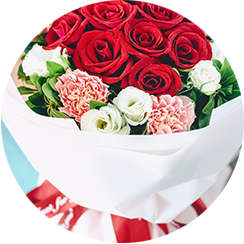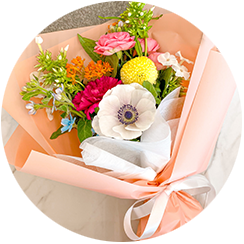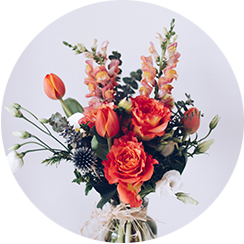Building a Thriving Orchid Oasis
Posted on 25/05/2025
Building a Thriving Orchid Oasis: Comprehensive Guide for Enthusiasts
Dreaming of transforming your home into a lush sanctuary filled with delicate blooms? Building a thriving orchid oasis at home offers a unique combination of beauty, serenity, and accomplishment. Orchids, with their remarkable diversity and enchanting flowers, are not just symbols of luxury--they are approachable plants for gardeners of all skill levels. This comprehensive guide will walk you through every stage of creating a flourishing orchid haven in your living space.

Why Create an Orchid Oasis at Home?
Orchids are more than just gorgeous houseplants. A dedicated orchid oasis provides numerous benefits, including:
- Stress reduction: Surrounding yourself with vibrant greenery and stunning blossoms can help reduce anxiety and promote relaxation.
- Air purification: Orchids absorb toxins and release oxygen, contributing to a healthier indoor environment.
- Beauty and diversity: With over 25,000 species and countless hybrids, these fascinating plants introduce endless colors, shapes, and fragrances into your home.
- Engaging hobby: Caring for an orchid oasis inspires learning and dedication, making it an enjoyable and rewarding passion.
Selecting the Perfect Orchid Varieties for Your Oasis
Building a thriving orchid paradise starts with choosing the right varieties suited for your environment and experience. Here are some popular and easy-to-grow options:
Phalaenopsis (Moth Orchid)
- Ideal for beginners due to their forgiving nature
- Available in a wide range of colors
- Tolerant of indoor conditions and low light
Cattleya
- Admired for their spectacular, fragrant blooms
- Require good light and airflow
Dendrobium
- Highly diverse with striking flowers
- Some varieties bloom multiple times a year
- Need a distinct dry period for best performance
Oncidium (Dancing Lady)
- Characterized by clusters of small, vibrant flowers
- Prefer slightly drier conditions and filtered light
For true beginners, Phalaenopsis and Dendrobium are excellent starting points when creating a home orchid oasis, as they adapt readily to household environments.
Essential Orchid Oasis Supplies
Building a successful orchid habitat involves assembling the right tools and materials. Here's a helpful checklist for your orchid sanctuary:
- Orchid pots: Preferably plastic or clay with drainage holes for optimal root health
- Potting medium: Specialized orchid mixes containing bark, sphagnum moss, perlite, or coconut husk chips
- Humidity trays or pebble trays: To boost ambient moisture levels
- Watering can with fine spout: For precise, gentle watering
- Fertilizer: Balanced, water-soluble orchid fertilizer
- Grow lights (optional): For rooms with insufficient natural light
- Spray bottle: For occasional misting
- Support stakes and clips: To keep tall flower spikes upright
Strategic Placement: Where to Situate Your Orchid Oasis
The secret to building a thriving orchid environment is appropriate placement. Orchids are sensitive about their surroundings. Consider the following tips:
- Light: Most orchids prefer bright, indirect light. An east- or west-facing window is ideal. Avoid harsh midday sun, which can scorch leaves.
- Temperature: Orchids thrive with daytime temperatures between 65-80?F (18-27?C) and a small drop at night.
- Humidity: A relative humidity of 40-70% creates optimal conditions for most varieties. Bathrooms or kitchens often provide this naturally.
- Air flow: Gentle movement from a fan or open window prevents pests and keeps leaves dry.
- Grouping: Clustering orchids together boosts humidity and creates a visually impactful oasis.
If natural conditions are inadequate, supplemental grow lights and humidity trays are invaluable for sustaining your indoor orchid retreat.
Mastering Orchid Potting & Repotting
A crucial element of a successful orchid haven is correct potting technique. Unlike many houseplants, orchids need airy roots and excellent drainage. Follow these steps:
How to Pot Your Orchid
- Choose the right pot: Ensure it fits your orchid's roots snugly but allows for growth.
- Prepare the medium: Use a fresh, chunky orchid mix rather than standard potting soil.
- Inspect roots: Trim broken, rotting, or dried roots with sterile scissors.
- Position in pot: Hold the orchid so roots spread out and fill with medium, gently tapping to eliminate air pockets.
- Water lightly: Moisten the mix without making it soggy.
Repot every 1-2 years or when the medium breaks down to keep roots healthy and vigorous.
Watering Wisdom: Maintaining Optimal Moisture Levels
Watering is among the most misunderstood aspects of orchid care, but it's pivotal for building a robust orchid collection.
- Frequency: Most orchids require watering once every 7-10 days. Stick your finger an inch into the medium--if it's dry, it's time to water.
- Method: Water thoroughly, allowing excess to drain completely. Never let your orchid sit in standing water.
- Humidity: Supplement with pebble trays or periodic misting, especially in dry climates.
- Water type: Use rainwater, distilled, or filtered water to avoid chemical buildup.
*Remember: Underwatering is safer than overwatering, which leads to rotten roots.*
Fertilizing for Success: Orchid Nutrition
For a flourishing orchid haven, nutrition is key. Here's how to boost flower production and robust growth:
- Use a balanced orchid fertilizer: Look for "20-20-20" or use formulas specifically for orchids.
- Apply weakly, weekly: Dilute to half strength and use every 2-3 waterings during the growing season.
- Flush monthly: Use plain water to rinse away accumulated salts and chemicals from the potting medium.
- Reduce feeding: During winter months, let your orchids rest and fertilize less often.
Creating the Ideal Orchid Display
Designing an attractive orchid oasis involves more than simply placing pots on a windowsill. Here are display ideas to inspire you:
- Styling with variety: Group differently sized orchids and complementary foliage plants for a layered effect.
- Orchid wall: Install wall-mounted planters or floating shelves to maximize vertical space.
- Terrariums or glass cases: Showcase miniature orchids and highlight their microclimate needs.
- Orchid trees or driftwood mounts: Attach epiphytic species for a more naturalistic and show-stopping presentation.
- Decorative containers: Choose attractive pots or baskets that match your interior style.
Remember, your orchid oasis should spark joy and reflection--don't be afraid to get creative with your design!
Common Orchid Problems and Solutions
Even seasoned growers can encounter challenges. Here's how to keep your orchid sanctuary thriving:
Pests
- Scale: Small, brown bumps on leaves. Treat with horticultural oil or insecticidal soap.
- Mealybugs: Cottony, white insects. Use isopropyl alcohol on affected areas.
- Spider mites: Fine webs and stippled leaves. Increase humidity and rinse leaves with lukewarm water.
Diseases
- Root rot: Yellowed, mushy roots. Repot with fresh medium, trim affected roots, and reduce watering frequency.
- Leaf spots: Caused by fungal or bacterial infections. Remove affected leaves, improve air flow, and apply appropriate fungicide.
Flower drop or wilting
- Possible causes: Sudden temperature changes, over- or underwatering, or insufficient light.
- Assess your care routine, adjust light, and ensure even moisture levels.
Routine inspection and preventative care go a long way in maintaining a healthy orchid retreat at home.
Advanced Tips for the Dedicated Orchid Grower
- Experiment with hybrids: As you gain confidence, try cultivating more challenging or rare orchid species.
- Microclimate control: Invest in hygrometers and grow lights to fine-tune your oasis conditions.
- Join orchid societies: Engage with local or online orchid clubs for expert advice and plant exchanges.
- Reblooming tricks: Some orchids require temperature drops or changes in watering to trigger a new bloom cycle. Pay attention to your plant's natural cycles.

Frequently Asked Questions About Building an Orchid Oasis
How many orchids can I grow indoors?
Depending on your space, air circulation, and available light, you can comfortably grow a few to several dozen orchids indoors. As you expand, focus on optimizing care and environmental controls.
Can orchids bloom year-round?
With a mix of species and hybrids in your collection, you can enjoy continuous orchid blooms throughout the year, as different types flower in various seasons.
Is an orchid oasis suitable for beginners?
Absolutely! By starting with resilient varieties and following orchid care fundamentals, anyone can create a lush orchid sanctuary.
Conclusion: Transform Your Home with an Orchid Oasis
Building a thriving orchid oasis is a deeply rewarding journey. With the right selection of plants, careful attention to their unique requirements, and a dash of creativity in your display, your home can become a breathtaking retreat. Not only will your blooming haven impress visitors, but it will also bring peace and beauty into your daily life.
Ready to begin? Choose your favorite orchids, gather your supplies, and let nature's wonders inspire every corner of your living space. Happy growing!
Latest Posts
Discover Poinsettia Care Techniques for Durability
Keep your blossoms fresh using these three easy-to-follow methods
Guide to Nurturing Your Cut Blooms







